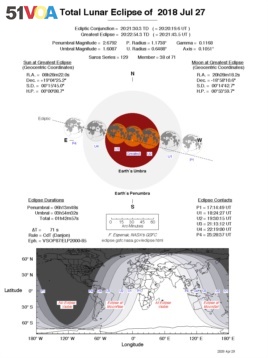This is What’s Trending Today…
The longest lunar eclipse of the century will happen late Friday or early Saturday, depending on where you live.
The American space agency NASA says the moon will move into the Earth’s shadow on Friday night. For four hours, it will be partly in the Earth’s shadow. The total eclipse will last 1 hour 42 minutes and 57 seconds.
The eclipse will be visible to people in Europe, Africa and the Middle East on July 27 between sunset and midnight. Those who live in Asia and Australia will be able to see the eclipse between midnight and sunrise on July 28.
The eclipse will turn the light color of the moon to deep red. Scientists call this kind of moon a “blood moon.”
Andrew Fabian is with the University of Cambridge. He spoke with the Reuters news agency. “It’s called a blood moon because the light from the sun goes through the Earth’s atmosphere on its way to the moon and the Earth’s atmosphere turns it red in the same way that when the sun goes down, it goes red.”
Unlike a solar eclipse, people can look at a lunar eclipse directly with their own eyes.
On the same day as the eclipse, the planet Mars will be at its brightest as it travels close to Earth.
The eclipse, however, will not be visible from North America or most of the Pacific.
The next lunar eclipse of such length will happen in 2123.
I’m Dorothy Gundy.

Total Lunar Eclipse of July 27, 2018. (NASA)
Hai Do adapted this story for Learning English based on NASA reports. Ashley Thompson. was the editor.
Write to us in the Comments Section or on
______________________________________________________________
Words in This Story
lunar eclipse – n. an occasion when the moon looks like it is completely or partially covered with a dark circle because of the Earth’s shadow is on it
visible – adj. able to be seen
shadow – n. a area of darkness created when a source of light is blocked
bright – adj. filled with light